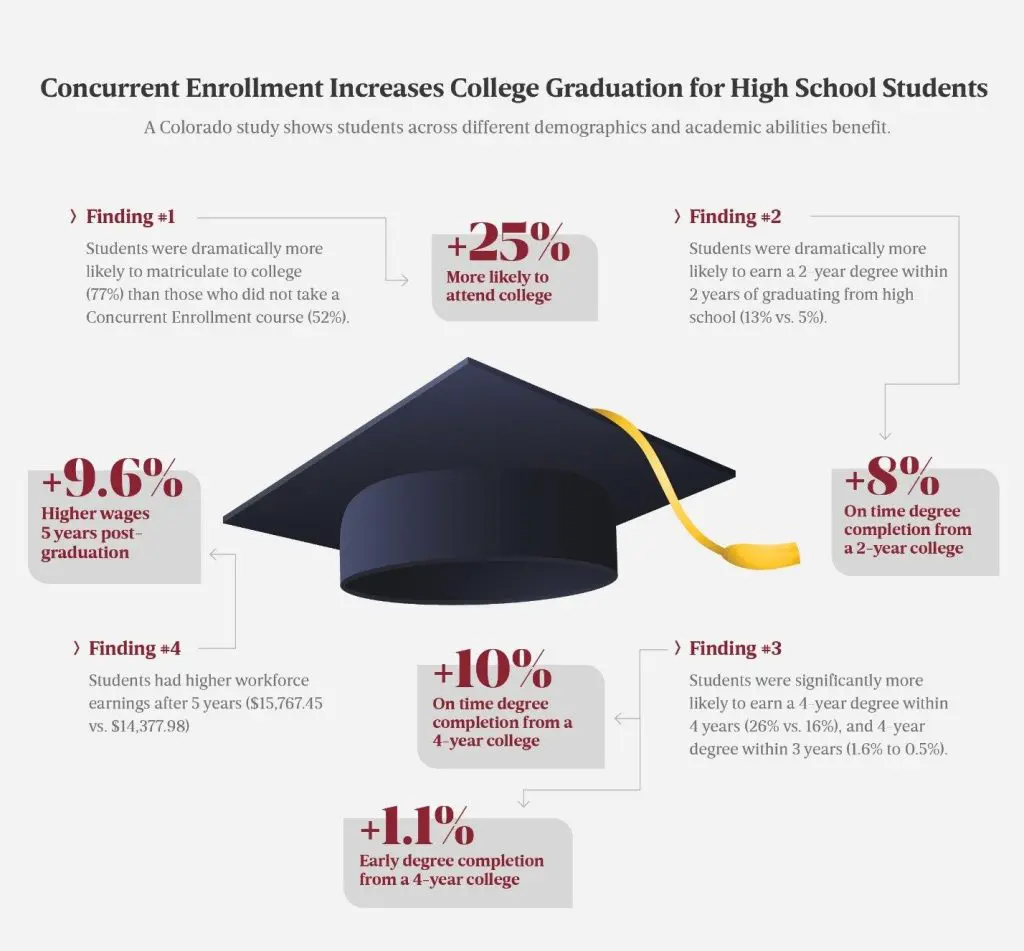Concurrent Enrollment: A Pathway to Success

Throughout Colorado, more high school students than ever are taking college courses before graduation. The state supports this through a program called Concurrent Enrollment and a new report from the Colorado Evaluation and Action Lab shows that it has the power to help students graduate from college and earn more in their early careers.
Recognizing the power of education in improving the lives of Colorado residents, Governor Jared Polis has set an ambitious goal that 66% of the state’s adults ages 25 to 34 will achieve postsecondary credentials by 2025. The Colorado Department of Higher Education (CDHE) and the Colorado Department of Education (CDE) both recognize the power of allowing high school students to begin earning college credit as an important step toward this goal.
Each year, CDHE and CDE study their progress. According to their report released today, more than 50,000 students took at least one dual enrollment course during the 2018-19 academic year, a 9.2% jump from 2017-18.
“Concurrent Enrollment is a critical program that has benefits for a variety of students,” said Gov. Jared Polis. “These courses allow students to challenge themselves in new and innovative ways and explore new fields of study, saving an estimated $50 million dollars on tuition.”
This year, the Colorado Lab teamed up with the Institute of Behavioral Science at the University of Colorado Boulder, CDHE, CDE, and the US Department of Education to augment the report with a research study on how the state’s Concurrent Enrollment program contributes to college graduation rates and workforce earnings. Their findings were dramatic.
- Students who took Concurrent Enrollment classes were 50% more likely to attend college.
- Once in college, these students are more likely to graduate on time. Twenty-six percent (26%) of students who took Concurrent Enrollment classes graduated in four years vs. 16% who did not.
- These students earn more in their early careers. In their first five years after high school graduation, students who had taken Concurrent Enrollment classes earned 9.6% more per year than those who did not.

“These results are truly exciting,” says Dr. Kristin Klopfenstein, Director of the Colorado Lab. “And even better, the study also showed that the findings hold true for students across different demographics and academic abilities.” The Lab and its research partners from the University of Colorado Boulder, CDHE, and CDE brought together data from a wide range of sources to examine the implications of the program.
Because of its clear boost for the futures of Colorado’s high school students, the study points to the critical importance of improving awareness of Concurrent Enrollment among students and their families. “Concurrent Enrollment provides college courses tuition-free,” says Dr. Klopfenstein. “Educators need to help families understand that helping their student take this extra step both saves them money and dramatically increases their student’s likelihood of getting a college degree.”